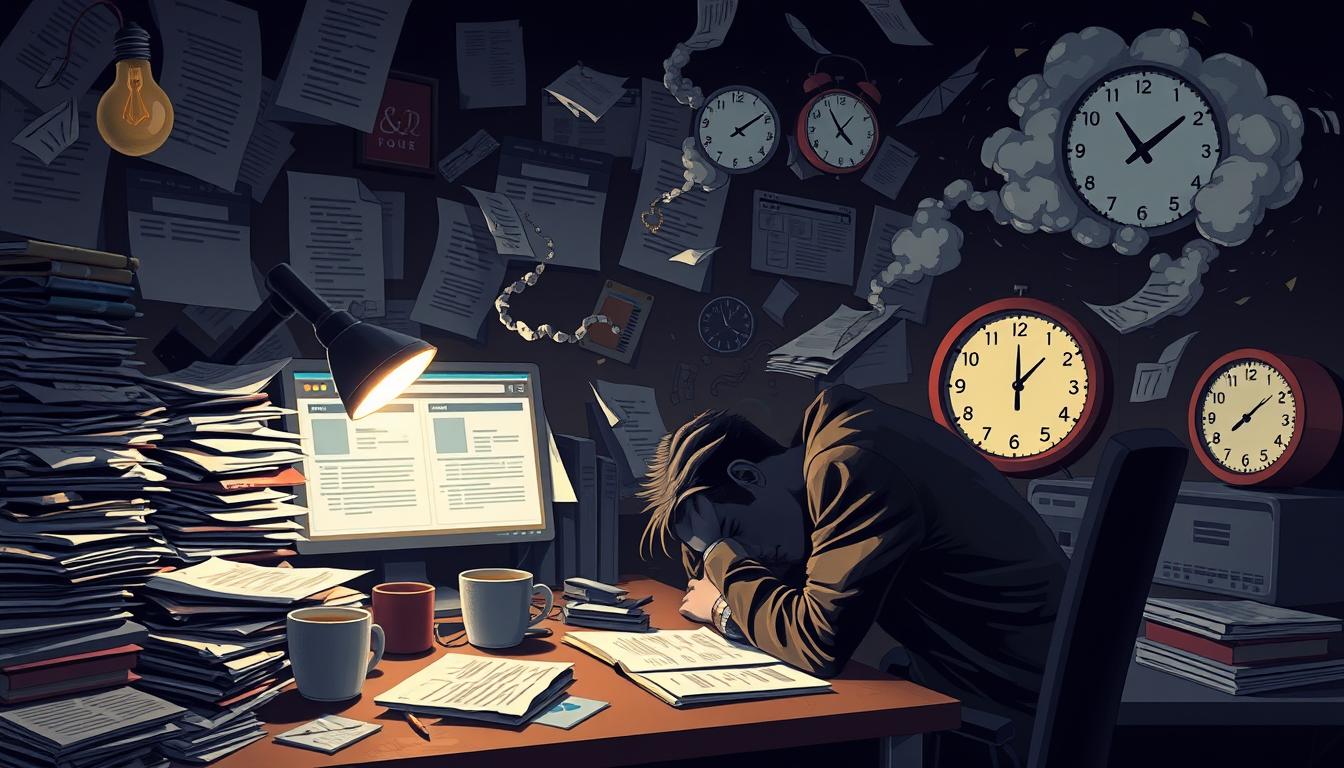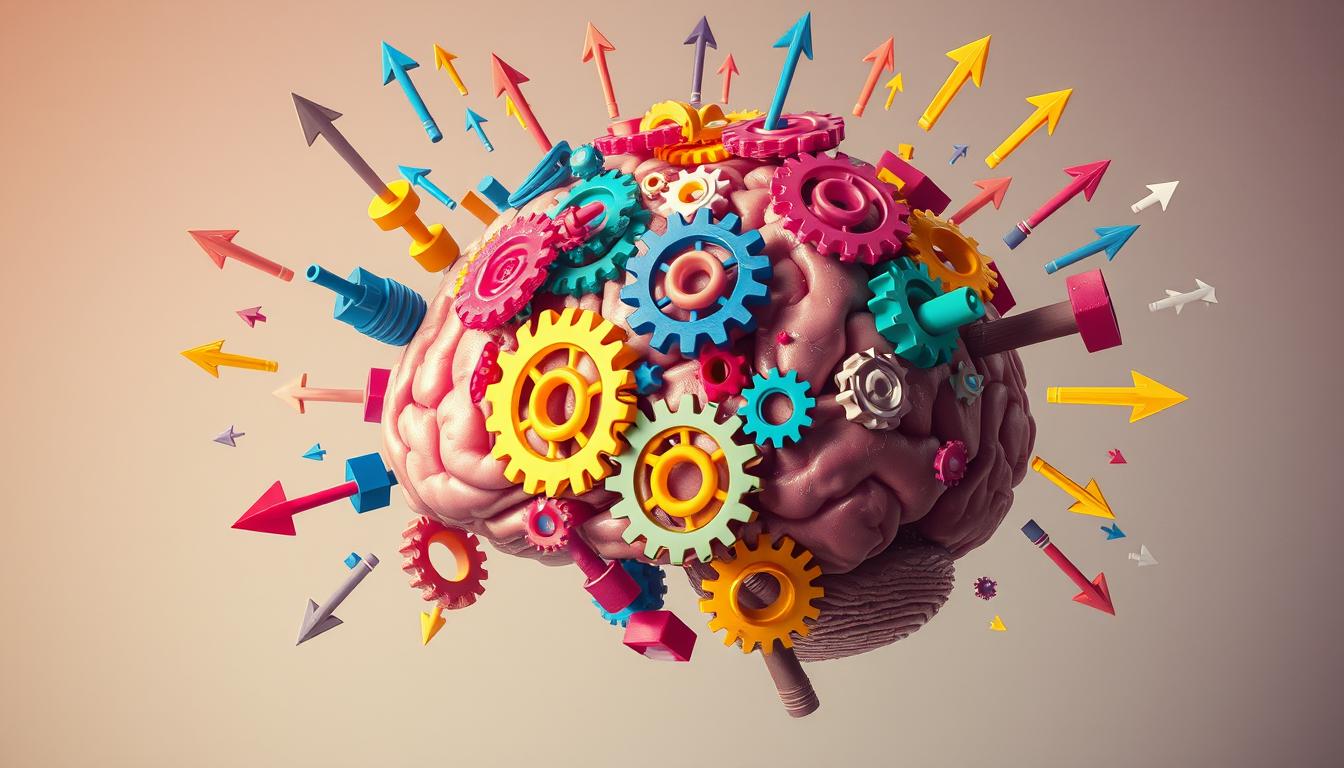Last Updated on December 9, 2025
In today’s fast-paced world, you might find yourself facing an overwhelming number of choices every day—estimates suggest this could be up to a staggering 35,000 decisions. This endless barrage contributes to what is known as decision fatigue, a phenomenon that can significantly drain your mental energy and affect your productivity levels. Understanding how to effectively reduce decision fatigue is essential if you aim to boost work performance and maintain focus.
This article will delve into the concept of decision fatigue, exploring its implications on your productivity and offering practical strategies to combat it. By adopting smart habits and frameworks tailored to your needs, you can enhance your decision-making capabilities and improve your overall efficiency in both personal and professional spheres.
Key Takeaways
- Decision fatigue arises from the overwhelming volume of choices you face daily.
- Delegating unnecessary decisions can free up mental resources.
- Establishing smart habits can significantly cut down on decision-making fatigue.
- Recognizing the early signs of decision fatigue leads to more effective decision outcomes.
- Work-life balance plays a crucial role in managing decision fatigue.
Understanding Decision Fatigue
Decision fatigue is a psychological phenomenon that impacts your ability to make sound choices when faced with numerous options. It reveals why your mental capacity may decline after prolonged decision-making. This decline can lead to indecisiveness, impulsive behavior, and overanalyzing options, all of which reduce your effectiveness.
What is Decision Fatigue?
Decision fatigue is the deteriorating ability to make sound decisions after a long period of decision-making, resulting in mental exhaustion. Research shows that as you face more choices, your brain’s energy reserves deplete. This phenomenon significantly hinders your productivity, making it difficult to focus and prioritize tasks. You may find yourself overwhelmed by even simple choices, leading to procrastination.
Why Does Decision Fatigue Occur?
The causes of decision fatigue include the sheer number and complexity of daily decisions. Emotional stress, a fear of making poor choices, and personal tendencies such as perfectionism can exacerbate this fatigue. As you experience decision fatigue, your ability to think creatively and solve problems diminishes. This state can result in missed opportunities and hinder your progress, both personally and professionally.

The Impact of Decision Fatigue on Productivity
Exploring the effects of decision fatigue on productivity shows its significant impact. Every choice you make drains your mental resources. This depletion has severe consequences, affecting your productivity in many ways.
Consequences of Decision Fatigue
Decision fatigue can severely reduce your attention to detail. You might make more careless mistakes or overlook crucial details. Studies show that prolonged decision-making weakens self-control, leading to impulsive choices. For example, Israeli judges are more likely to grant parole in the morning than in the afternoon.
This decline can cause frustration, a backlog of tasks, and increased stress. It’s a clear sign of how decision fatigue can hinder your performance.
How Decision Fatigue Leads to Procrastination
The connection between decision fatigue and procrastination is evident. The mental burden of constant choices can lead to avoidance. You might delay important tasks, choosing easier, less demanding activities instead.
This cycle of procrastination severely impacts your productivity. Recognizing and managing decision fatigue triggers can improve your performance in both personal and professional settings.
Recognizing the Symptoms of Decision Fatigue
Understanding the symptoms of decision fatigue is crucial for maintaining productivity and mental health. This phenomenon shows up in different ways. Recognizing it can help you find ways to regain clarity.
Cognitive Overload and Mental Clarity
Cognitive overload happens when you face too many options, leading to decreased mental clarity. You might struggle to think clearly or make logical decisions. This often occurs after a day filled with choices.
Mental clarity techniques can greatly help. By prioritizing tasks, limiting daily decisions, and using decision-making frameworks, you can regain focus. This reduces cognitive load.
Physical Symptoms of Exhaustion
Decision fatigue often brings physical symptoms. You might feel tired, irritable, or overwhelmed, impacting your work and personal life. This exhaustion comes from constant decision-making and can worsen with external stress.
Noticing these physical signs helps you know when to take a break. Early action against decision fatigue symptoms is key. It keeps your mental and physical health in check.

Strategies to Combat Decision Fatigue
To combat decision fatigue, it’s crucial to adopt smart strategies. These help streamline your choices and boost mental clarity. By establishing routines and using decision-making frameworks, you can save mental energy for critical decisions.
Implementing Routines and Templates
Creating routines and templates is an effective way to cut down on daily decisions. For instance, planning your meals for the week can eliminate the daily dinner dilemma. This approach not only saves time but also frees up mental space for more important decisions. Other productivity tips include:
- Setting specific days for certain tasks (e.g., laundry on Sundays).
- Using templates for common emails or reports.
- Incorporating checklists for daily responsibilities.
Using Decision-Making Frameworks
Decision-making frameworks offer a structured way to evaluate options. They make choices clearer and more manageable. These frameworks guide you through the decision-making process, easing cognitive overload. For example, the Eisenhower Matrix helps prioritize tasks based on urgency and importance. Other beneficial techniques include:
- Using pros and cons lists for significant decisions.
- Setting clear criteria for evaluating options.
- Establishing rules for when to make decisions, reducing unnecessary deliberation.
By implementing these strategies, you can maintain focus, avoid impulsive choices, and boost your productivity.
Decision Fatigue Productivity: Make Fewer Decisions
Decision fatigue can exhaust your mental energy, making simple choices seem daunting. To boost your productivity, focus on making fewer decisions daily. Strategies like effective meal planning and outfit simplification can simplify your routine. This frees up mental energy for more important tasks.
Planning Your Meals Efficiently
Meal planning cuts down on food-related decisions you make each week. By setting aside time each week for meal prep, you’re better prepared. This structured approach helps you:
- Reduce last-minute choices about what to eat
- Minimize food waste by using up ingredients
- Ensure balanced and nutritious meals
With a meal plan in place, you can tackle more significant tasks, improving your productivity.
Outfit Simplification Techniques
Streamlining your wardrobe is a great way to reduce decision-making. By adopting a capsule wardrobe or a consistent daily look, mornings become less hectic. Here are some tips:
- Create a signature look that works for you
- Organize your closet to keep favorite pieces visible
- Set a weekly outfit plan to avoid indecision
Outfit simplification saves mental energy, allowing you to focus on more critical decisions. This leads to increased productivity.

Leveraging Team Strengths for Better Decision-Making
Effective decision-making in a team environment can significantly reduce decision fatigue while enhancing productivity. Utilizing team decision-making strategies allows individuals to share the weight of choices, facilitating a more efficient process. By implementing delegation based on each member’s strengths, teams can cultivate an atmosphere of shared responsibility and engagement.
Delegation of Decisions
Delegating decisions empowers team members, enabling them to take charge in areas where they excel. This practice not only minimizes the mental load for everyone but also fosters a sense of ownership, leading to more thoughtful decisions. For instance, a project manager might delegate budget-related decisions to a finance expert, allowing for clearer focus and better outcomes.
Collaborative Decision-Making Exercises
Incorporating collaborative techniques such as brainstorming sessions, group discussions, and consensus-building exercises can enhance the decision-making process. These methods encourage diverse viewpoints and creativity, often resulting in more robust solutions. By drawing from each team member’s insights, decisions become more rounded and informed, ultimately driving productivity and minimizing the adverse effects of decision fatigue.
Managing Stress to Reduce Decision Fatigue
Stress significantly impacts decision fatigue. You face numerous stressors at work that can exhaust your decision-making abilities. Identifying and tackling these stressors can boost your mental health and decision-making skills.
Identifying High-Stress Factors
Start by pinpointing the work-related stressors. These might include:
- Heavy workloads with tight deadlines
- Lack of adequate resources or support
- Continuous distractions, such as notifications or interruptions
By pinpointing these stressors, you can effectively manage decision fatigue. Using stress reduction techniques helps maintain a healthier mindset. This clarity enables better decision-making.
Balancing Workloads and Resources
To combat decision fatigue, focus on workload balance. Consider these strategies:
- Distribute tasks based on team strengths to ease pressure.
- Use templates and checklists for routine tasks.
- Apply decision-making frameworks for complex choices.
Workload balance allows for mental rejuvenation. This not only enhances decision-making but also strengthens your role’s demands handling.

Prioritizing Decisions for Maximum Effectiveness
Managing daily tasks effectively requires prioritizing decisions. It’s crucial to distinguish between high-stakes and low-stakes choices. This distinction helps allocate mental resources efficiently. Tackling high-stakes decisions when you’re most alert boosts your productivity.
Identifying High-Stakes vs. Low-Stakes Decisions
Understanding the impact of your choices is key to effective prioritization. Tasks with a higher Return on Investment (ROI) should be prioritized. For example, strategic planning at work is more important than choosing what to wear.
Steve Jobs’ simple wardrobe choice is a prime example. It shows how reducing trivial decisions can reduce mental fatigue. This strategy allows for more focus on critical decisions.
Time Management Techniques
Effective time management enhances decision-making. Techniques like the Pomodoro Method offer focused work periods with breaks. This method creates a conducive environment for significant decisions.
Streamlining daily tasks through meal planning and checklists also helps. These strategies allow you to focus on what’s most important. This approach maximizes your effectiveness.

Implementing these strategies improves decision-making and reduces daily overwhelm. Tools like a notes app for journaling can enhance productivity and clarity. They help organize thoughts and track progress.
To explore more ways to boost productivity, check out various time management strategies. These methods aim to reduce decision fatigue and streamline daily tasks.
Conclusion
Overcoming decision fatigue is crucial for boosting productivity in work and personal life. This article has shown how strategies like systematic planning and prioritization can enhance your decision-making skills. Leaders who make tough decisions early in the day see a significant boost in efficiency and mental clarity. This leads to better performance overall.
Setting up structured routines, like scheduling decision times and using a reliable system, eases the mental burden of daily choices. Embracing “good enough” decisions can bring relief and free up focus for more important tasks. Remember, our brains have limited resources for making decisions. Tools like Clockify help track progress and cut down on energy-draining activities.
By adopting these strategies, you can effectively fight decision fatigue, leading to better mental clarity and productivity. Prioritizing decisions and using constraints to guide them helps focus on what drives success. Embrace the discomfort of decision-making, and watch your leadership and creativity soar.








